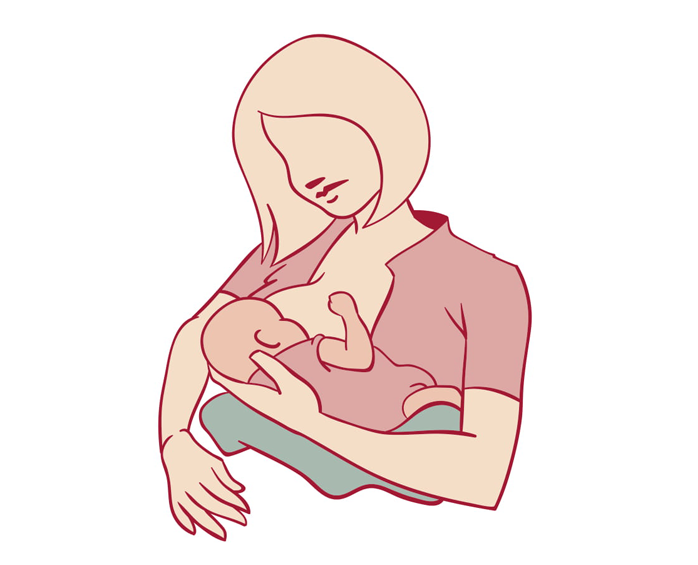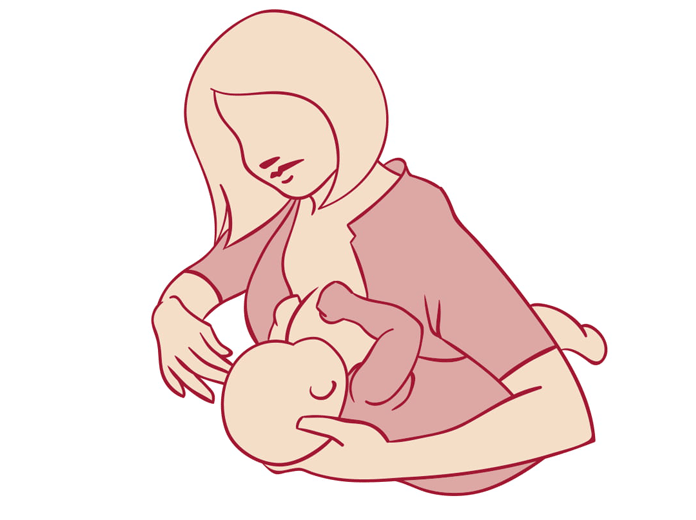
This week, we caught up with Natalie, The Feeding Whisperer, for her top breastfeeding tips.
Let’s be brutally honest. Breastfeeding can take a little time and can require a touch of patience until you feel comfortable and confident with the process.
However, there is no set method – I always like to remind parents that you and your baby are unique.

Get comfy before you begin breastfeeding
One thing is for sure, it’s really important for anyone breastfeeding to make sure you’re relaxed and comfortable when your journey begins.
Nobody wants to breastfeed on a ‘dead’ arm. Nobody wants to feel peckish or thirsty. Why would you? There is no need.
If you are in a good ‘place’, with a calm sense of mind, this will filter through and translate to your baby – and a happy and calm baby makes mum happy too!
Before you start, make sure you’ve got everything you need – a drink, a snack, muslin cloths, and of course Netflix or anything else you might use to relax. There is no need to change your routine.

Common positions for breastfeeding
There are lots of positions that are commonly used for breastfeeding so find what feels most comfortable for you and your baby and take it from there.
Cross-cradle hold
You use one arm to hold and position your breast. Your other arm is then used to support your baby.
This position makes it easier to see your nipple and your baby’s mouth so can be ideal for babies that have trouble getting latched on or for newborns.

Rugby hold
As the name suggests, tuck your baby under your arm like a rugby ball or clutch bag in this particular breastfeeding hold.
It’s a popular position for feeding twins as both babies can feed at the same time from different breasts. Because the baby does not lie across your tummy, it’s also a good option for C-Section mums.
To get started, you’ll need to sit in a chair with cushions or pillows at your side to rest your baby/babies on. Hold your baby under your arm with their hips close to your hips. The cushions or pillows should support your baby’s weight, with your palm supporting their neck.
You will need to make sure your baby’s nose is level with your nipple. Starting nose to nipple, this automatically tips your baby’s head back and encourages them to take a large mouthful to help with latching on.

Laid-back
Laid-back breastfeeding uses gravity to help your baby get a deeper latch. In this position, recline your body to support your baby with you both facing each other, closely touching.
To try the laid-back breastfeeding position, lie back on a sofa or bed at approximately a 45-degree angle. Use pillows to prop yourself up and make sure you’re feeling comfortable. Place your baby on their front against your tummy so you are fully supporting them. Your bodies will be tummy to tummy.
Allow them to latch on by pointing your nipple to the roof of the baby’s mouth.

Lying on your side
Side-lying works well for night-time feeds or if you’re feeling especially sleep-deprived. This one’s also good for mums who’ve had a C-Section as it avoids any pressure on your scar.
First off, lie your baby on their back, making sure there are no pillows or duvets close to your baby’s face.
Face your baby by lying on your side, with a pillow to support your head, and one between your legs for comfort. You may also find a rolled-up towel or pillow behind your back provides additional support.
Turn your baby towards you in a straight line with their nose lined up to the nipple of your lower breast. Make sure your baby’s body isn’t twisted, and tuck your baby tightly into you.
Guide your baby’s mouth towards your nipple until they secure a good latch to feed.

Koala
This is an ideal position for bigger babies with stronger a control of their body, i.e. those that can sit upright. Although it can be done with younger babies if you fully support their weight.
In this position, your baby sits upright and straddles you.
Make sure you’re sitting comfortably and your baby is facing you, straddling your hip and thighs. Your baby’s head should be slightly lower than your breast so that it has to tilt upwards to latch on.
Extra breastfeeding tips
Whichever breastfeeding position you choose, remember to bring your baby to your breast and don’t hunch over them.

Tuck your baby in close and their body should be in alignment.
A great acronym is CHINS
CLOSE – Baby needs to be close to mum so that they can take enough breast into their mouth.
HEAD FREE – Baby needs to tilt their head back when attaching to the breast. This is to allow their chin to lead as they come on to the breast.
IN-LINE – Baby’s head and body need to be in a straight line so that they don’t have to twist their neck. This makes swallowing easier.
NOSE TO NIPPLE – Mum’s nipple should be just below baby’s nose so that as baby roots and tilts their head backwards, the nipple will slip under their top lip upwards and backwards to rest on the baby’s palate.
SUSTAINABLE – The position should be comfortable for both mum and baby for the duration of the feed.
As long as the above principles are in place, you might find you develop your own position unique to you and your baby.
The way you breastfeed your baby is up to you. It’s your choice.
About the author

Natalie – The Feeding Whisperer
Wife and mum to two growing boys, Natalie is a Health Improvement Practitioner for the NHS and the proud found of The Feeding Whisperer.
To find out more, head to www.facebook.com/Thefeedingwhisperer or email thefeedingwhisperer@gmail.com.
